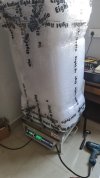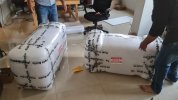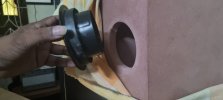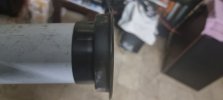Thanks a lot for chipping in @navin advani much appreciated.
From whatever little my understanding of the Acoustics, I too hold the same opinion. Incidentally, using thin sheet of lead is what I too was considering and even discussed about it with @Vineethkumar01 just yesterday.CLD works best if the stiffness and density of the 2 layers are as different as possible. I have not used Aluminium but I have used closed cell foam, resin bonded fibreglass (FRP) and lead sheet as the CLD layer.
Thanks so much for sharing this. Much appreciated.For any others interested like me, I am posting this link which shows more pics and gives more details about this build: https://www.audiocircle.com/index.php?topic=110639.0
Thanks so much. The crossover is almost complete. Got delayed as Mr. Mukherjee of Syco India was indisposed.Looking very good!
Yes. The cabinets cost me 9k and the three pairs of Zantzen Binding Posts cost me all of 6k.66% of the cost of building the box?






